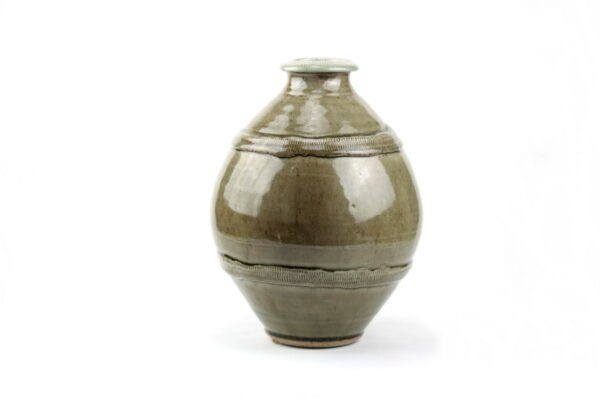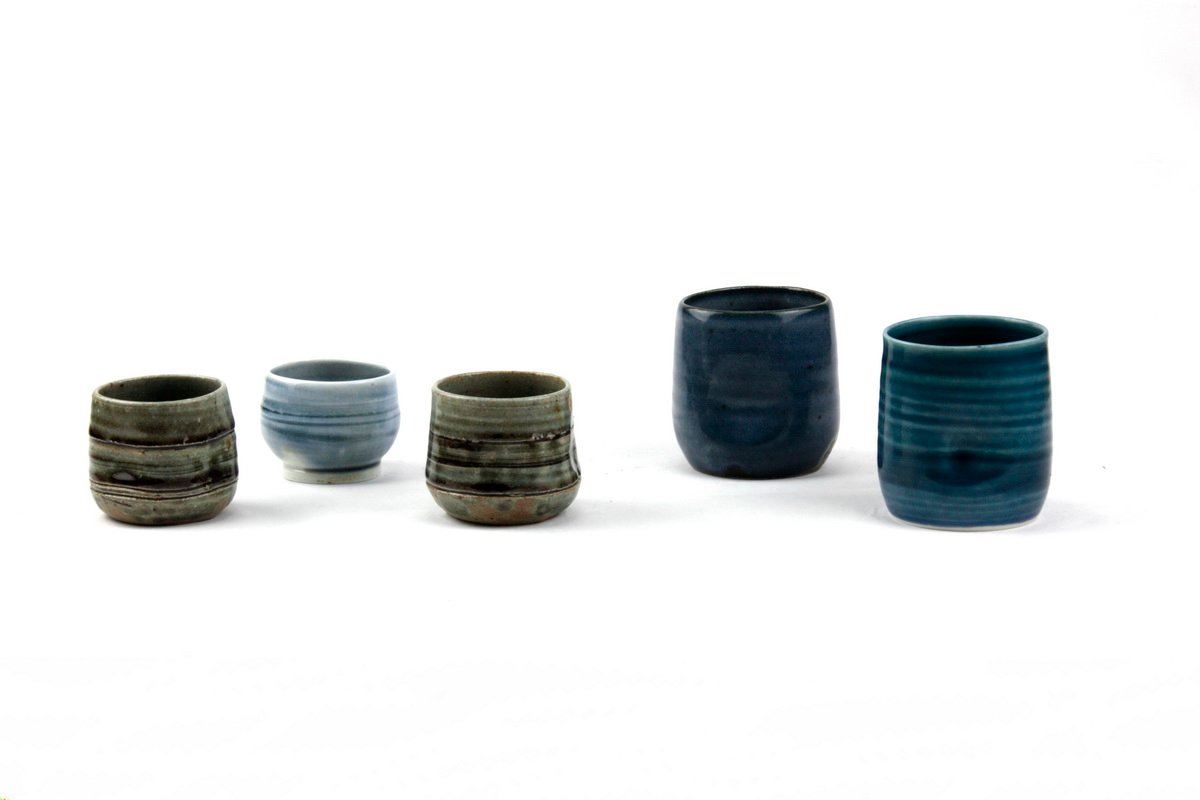ceramics
Showing 265–276 of 289 results
-

Jelfs Jude
Jude studied Fine Art, and became a potter when she married John Jelfs. Over the last few years, she has returned to her roots, combining pottery with painting and sculpture in her current work.
Her ceramics range from earthenware or porcelain, to 3-
dimensional stoneware pieces. Currently she is making flat, almost two- dimensional, slab- built pieces, often vessels. The shapes are cut out from sheets of clay, curved, and assembled like dress- making. They are decorated with layers of vitreous (glass forming) slips, burnished, and scraffito lines are drawn through one layer to expose another. They are biscuit fired one or more times, and are usually glazed inside. The work starts with life- drawing, and each piece is an extension of this. When asked where her ideas came from she responded “My inspiration comes from all over the place. Many things spark it off. The thought that everyone you see walking down the street is naked under their clothes…..never fails to make me smile.”
Jude’s work is on show at galleries all over the U.K., as well as in her studio at the Cotswold Pottery.
She is also a professional member of the Craft Potters’ Association (CPA)
-

Welch Robin
Robin Welch has a unique and varied background, at least as far as British potters are concerned. His first real introduction to pottery was while he was studying for a Diploma in Art & Design at the Penzance School of Art, where he met Michael Leach, Bernard’s youngest son, who was his tutor there. Originally he had been more interested in sculpture, but began to take up pottery under the tutelage of Michael, and soon started to work at the Leach Pottery at weekends and during holidays.
Robin then spent a year at the Central School of Art in London, before he set up his first pottery, followed by a second in Australia, where he stayed for three years. Upon his return to England in 1965 he set up Stradbroke Pottery, where he is still based today and from where his distinctive thrown, coiled and slab-
built forms have developed. He experiments with materials and glazes and his larger pieces are both thrown and hand-
built to bring them to the desired height and shape. Examples of Robin Welch’s work are being found in many public collections in the UK, such as the Victoria & Albert Museum in London, as well as in Australia and the Netherlands. He has exhibited widely, has been craftsman in residence at Monasa University, New York State College of Art and Indiana University, and designs shapes for Denby, Midwinter, Rose of England Bone China and Wedgewood.
A further testament to his importance for British pottery and ceramics is his inclusion in Tony Birks influential book ‘The Art of the Modern Potter’, published in 1967, where he featured alongside the likes of Lucie Rie, Hans Coper, Gordon Baldwin and Ruth Duckworth.
-
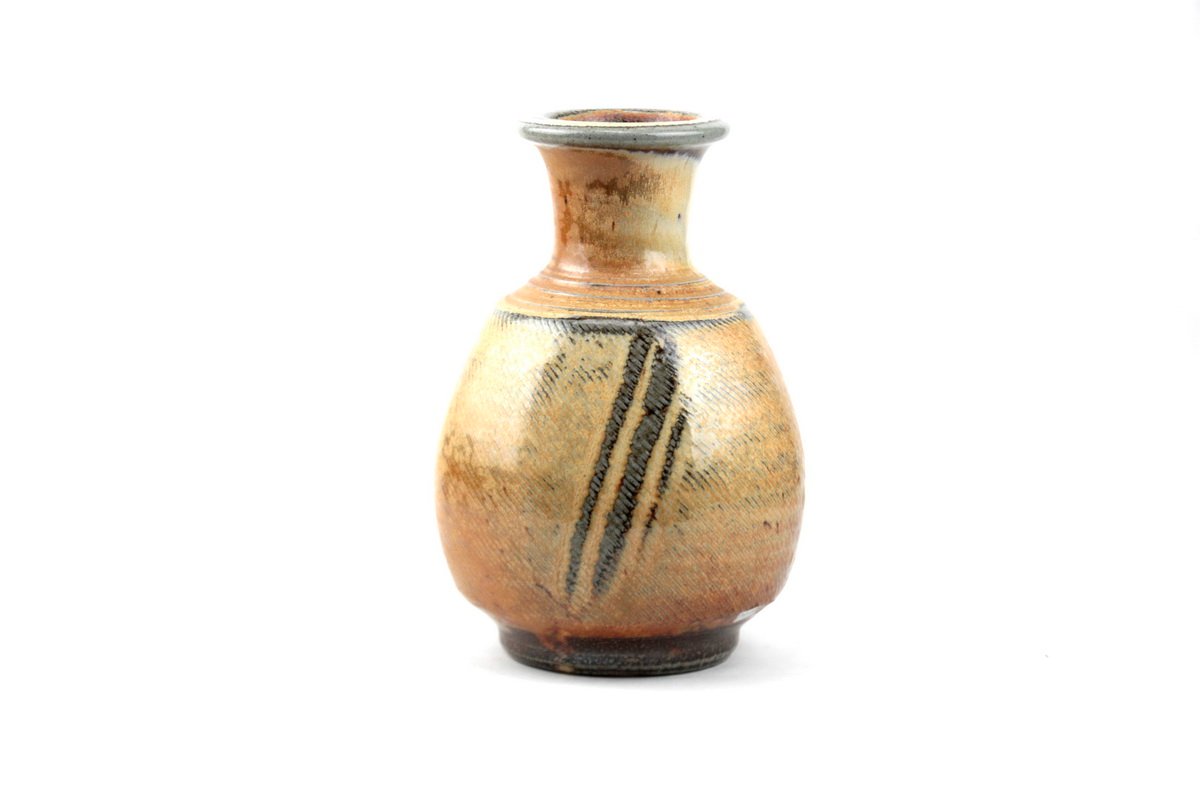
Jelfs John
Date of Birth: 16.07.46
Brief Description of Work:
Mainly one-off stoneware work in traditional shino, celadon and ash glazes.Training and Experience:
Trained at Cheltenham College of Art and Design, after previous career as a marine engineering officer.Worked for Russell Collins for six months then set up pottery in 1973.
I feel I am mainly self taught. \r\nArtists Statement:
The Cotswold Pottery is situated in a busy tourist area. It is a challenge therefore to present visitors with top quality ceramics. I am most interested in simply glazed strongly formed work. My inspiration is the work of the east and I owe a lot to Leach, Hamada and the peasant pottery of Korea. -

Hayes Peter
Born Birmingham 1946, works in Bath
I have always been interested in why and how ‘things’ are made of clay. One of the major introductions I had to ceramics was digging Neolithic iron age and Roman samien shards on archaeological digs somewhere in Wales while trying to survive as an art student in Birmingham. I am naturally drawn to shapes of artifacts and objects from other cultures and other times.
Erosion and change through time and nature are recorded in a piece. My main aim in my work is not to compete with nature but for the work to evolve within the environment. The minerals, like iron and copper, that I introduce into the ‘raku‘ (the Japanese name given to a particular low temperature firing technique) ceramic surface have their own effect on the clay during the time they are submerged in the river or the sea. This erosion process continues with sanding so that the texture and cracks do not interrupt the surface but become an organic, integral part of the patina. Each individual piece takes on its own developing surface; its own history and its own aesthetic. I am merely the maker.
Public collections
- Scottish National Gallery, Edinburgh
- Museum of Modern Art, Kingston, Jamaica
- Garderner Collection, Toronto
- Museum of Modern Art, Brussels, Belgium
- Silber Collection, California
- J.B Speed Museum, Louisville. KY.
-

Nemet Sabine
Born East Germany, 1971.
Sabine makes wood-fired, soda-glazed stoneware at The Barn Pottery in Moretonhampstead, Devon.
Other information
Sabine and Nic Collins run a one-week firing workshop at the end of August each year. Participants bring their own pots and pack and fire both their wood fired kilns.
Technical information
The pots are made with a clay body that I mix myself with local clays. Most of my work is thrown on the potter’s wheel with some slab built dishes and platters. Sometimes I apply an inlay decoration to my pots.
The pots are then glazed with a simple glaze on the inside and then fired in a wood-fired kiln for 30 hours up to 1,300 degrees centigrade. At a high temperature I spray bicarbonate of soda into the kiln to give each piece, along with the fly ash in the kiln, a unique character.
Biography
- 22.08.1971: Born in Sömmerda (East Germany)
- 1978-1988: Polytechnic school
- 1988-1990: First apprenticeship as a technical drawer
- 1995-1997: Apprenticeship as a potter in Waldenburg/Sachsen with Hans Joachim Gruenert
- 1997-2000: Worked for several potters in Germany
- 2000: Arrival in Moretonhampstead and started to work as a self-employed potter
- 2013: Professional member of the CPA.
Recent exhibitions
September 2012: Five Devon Potters exhibition at Green Hill Gallery, Moretonhampstead as a guest exhibitor.
Work styles
- Thrown stoneware
- Soda firied
- One-off vessels; teabowls; kitchen & tableware; bottles.
-
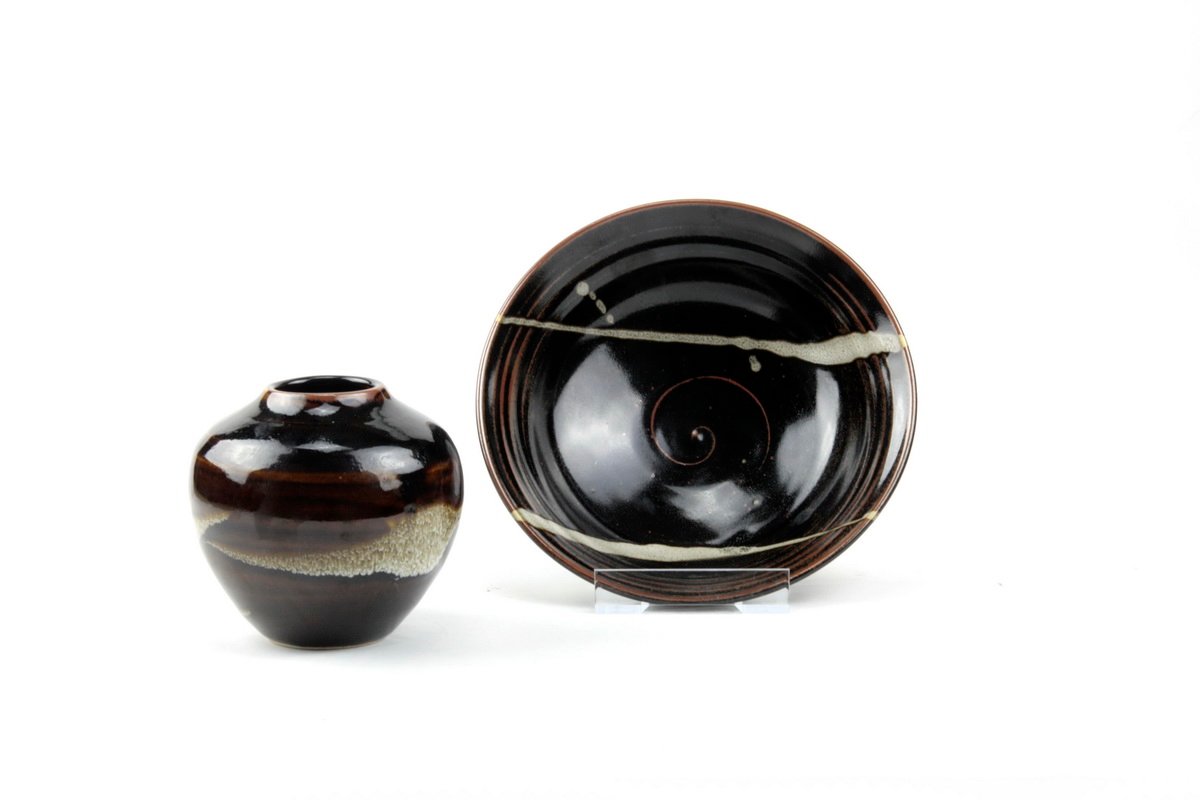
Wason Joanna
Joanna was born in Berlin in 1952 and grew up near Bideford, North Devon. She attended the Exeter College of Art as well as the Liverpool Art School in the early seventies where she studied fine art.
In 1974 while living in Scotland her husband set up a pottery and with clay at hand Joanna began making portrait heads and figurative sculptures. From that Joanna learnt mould making allowing her to make much larger sculptures which she cast in cement or metal and resin.
After moving to Cornwall Joanna was introduced to The Leach Pottery where in 1988 she found herself working for Janet Leach as a studio assistant. From the pottery she explored working with thrown and slab stoneware pots, bowls, bottles and boxes using ash or iron rich glazes. Joanna stayed at the pottery long after Janet’s death and was one of the last of potters at the pottery when it closed its doors at the end of 2005.
Since leaving The Leach Pottery Joanna has set up her own workshop. She continues to throw stoneware and porcelain pots as well as creating ceramic sculptures, all of which are fired in a reduction atmosphere in her gas kiln.
-
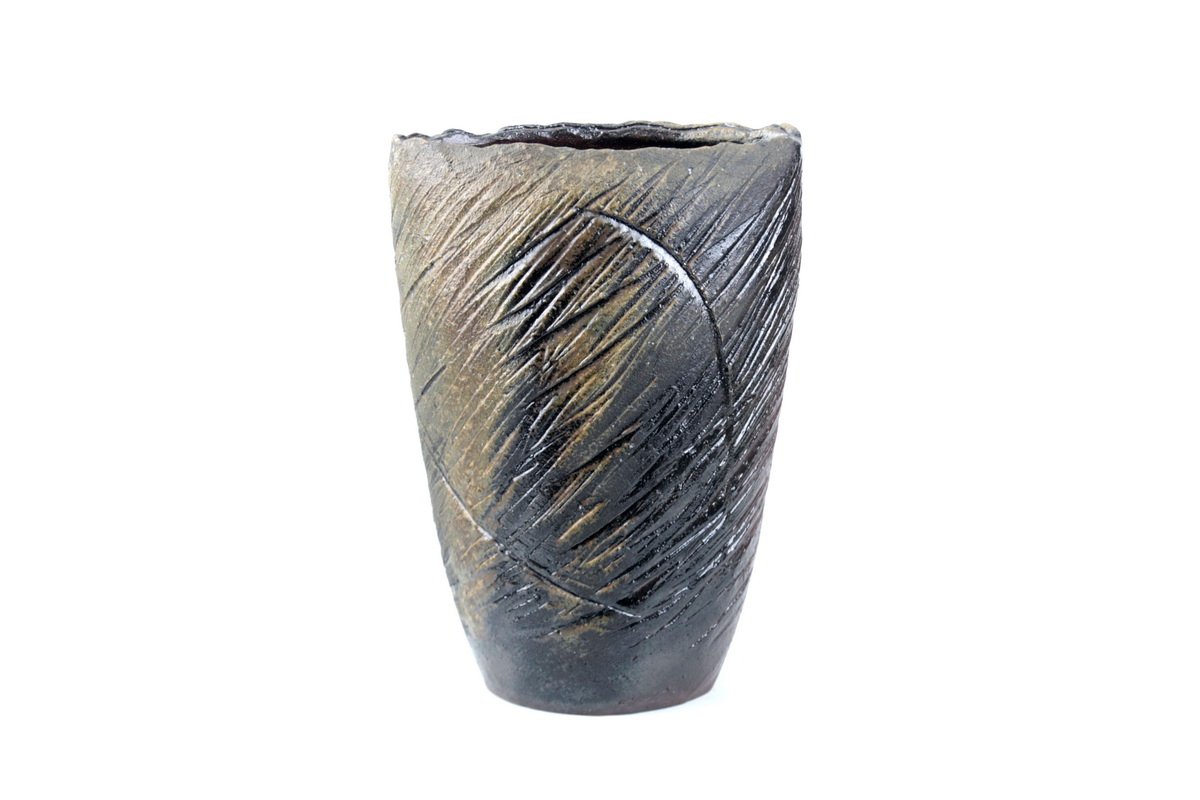
Erasmus James
Wood Fired Ceramics
I have lived in Japan since 1996 and worked as a potter since 1999. In that time I have gone from making pots in my spare time to full time apprentice to establishing my own wood fired kiln and studio. Life in Japan poses its challenges, but for a potter it can also be tremendously rewarding.
The five years spent as an apprentice in Bizen have strongly influenced the way I think about pottery and the process of making it. In 2004 my wife and I moved to Tamba and I built a ten metre anagama which was successfully fired for the first time in 2006. Since then I have fired the kiln twice a year, each kiln holding 800 to a 1000 pots.
I work in a very direct way with the ‘stuff’ of pottery –
I process my own clay and split my own wood. The nature of the clay, mostly from Bizen, is essential to the feel of my work. I use no glazes. All my pots are fired solely with wood for a week to ten days in the anagama. Choice of clay and positioning of the pots in the kiln is critical to success. It is a long and demanding process requiring resourcefulness and flexibility, strength and sensitivity. The clay, the forms and the firing – from this deceptively simple process can emerge pots with a complex, subtle and long lasting beauty. For me it is an endlessly fascinating challenge.
-
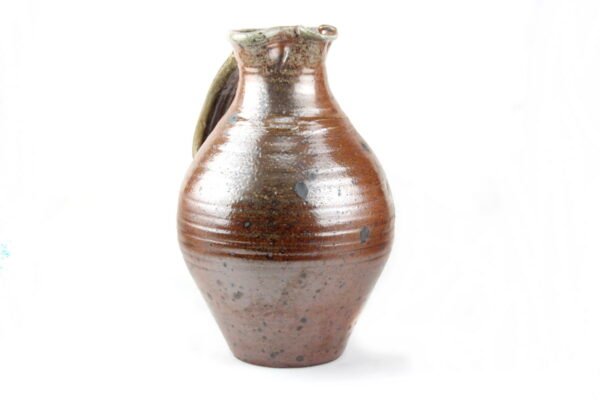
Collins Nic
Born Leamington Spa, 1958
Works in Moretonhampstead, Devon
Nic has been potting for more than 30 years. His first encounters with wood firing began as he had no other way to fire his work. From an early age Nic began building kilns as well as wheels and sourcing his own clay from the local river banks in his area. He has experimented in the past with raku, sawdust firings and salt glazing.
After teaching himself to throw, Nic went to Derby College of Art where he completed an HND. He then briefly worked in potteries in Germany and Italy, returning to set up home and workshop at Powdermills, the site of an old gunpowder mill, set in the heart of Dartmoor. Nic now lives and works in Moretonhampstead on the edge of Dartmoor.
He is inspired by medieval English pottery and wood-fired Japanese ceramics. Firing with wood gives the pots their warm ‘toasted’ colour and careful packing of the kiln, based on traditional Japanese anagama (single chamber) kilns, gives some degree of control over the production. The firing can take up to 60 hours, stoking every 15 minutes and after a four-day cooling period the kiln is unpacked. Nic is currently using a groundhog type kiln, firing for around 80 hours to temperatures exceeding 1300oC, and using shino and ash glazes. All work is made on a momentum kick wheel.
The Number 1 kiln built at Powdermills was of the Olsen fast fire design and soon replaced by a very large 500 cu. ft. anagama type kiln. Products made included large garden pots and a range of domestic wares. Use of local clays and firing techniques have resulted in more one-off pieces now being produced. Pots show a build up of ash glaze, wadding marks, scars and flame flashing.
After moving to new premises a smaller kiln has been built to develop his ideas further.
Nic likes to achieve a build up of texture from the effects of the firing. Some pots returning to the fire up to seven times. There is also the exploration of different effects by using different clays and utilising various areas of the kiln.Background and history
- 1983-1985: Stratford College
- 1985-1987: Derby Art School: HND Studio Ceramics
- 1987: Workshop experience in Italy and Germany
- 1988-2000 Powdermills Pottery, Postbridge, Dartmoor, Founder and owner
- 2000: Personal workshop in Moretonhampstead, Devon
-

Ringel Susanne Lukacs
Artist Statement
I started pottery when I was 17 years old but I was also a young mum and had two children so I wasn’t able to spend as much time doing pottery as I would have liked. It wasn’t until 2005 when I started wood firing that it all became a new start for me. During this year I conducted a workshop ‘Building a kiln for wood firing use’ which the German Potter Association helped me to organise. Fred Olson built and design the kiln which then started to become my real teacher.My aim was to try to make pots for using, to develop this objective I was very lucky to have the opportunity to come to the UK to work together with Nic Collins as his assistant and to help Svend Bayer with his firing.
I put all of my love into my work and I try to make new pieces for everyday use. I hope that people can enjoy their meals eating out of my pots. The last few years I have had a strong connection with a Japanese potter Takashi Nagazato. He introduced me to the Japanese way of life and the way in which they use little dishes and teapots during meal time. This has really influenced my life and what I produce.
At Art in Clay 2014 Susanne was voted the winner of the Valentine Clays Peers Award for best contribution to the festival by fellow exhibitors. To read our interview with Susanne click here.
-

Dufayard Françoise
Françoise Dufayard lives and works in Rennes, Brittany, France. During the late 1970s Françoise studied ceramics at the Ateliers de Fontblanche in Vitrolles, then she travelled around Asia (1981-1982). From 1983 to 1987 she worked for Gustave Tiffoche then Suzy Atkins. Subsequently in 1988 she set up her studio at Rennes (Brittany) where she makes open platters, big vases, large dishes and witty teapots, using slipware techniques.
Françoise uses a red Spanish earthenware clay fired to 1,120oC in a 500 litres gas kiln. She has developed a very personal interpretation of terre vernissée, or slipware, which creates a translucence in her work and gives her decoration a quality one sees only in painting; something of a rarity in this medium. This can be attributed in part to her exploration of Eastern ceramics as found on visits to Nepal, India, Burma, Thailand, Japan, Korea, China, Uzbekistan, Tibet and recently Sri Lanka. Her very individual brushstroke can be read as personal reflections of this Eastern influence.
Exhibitions since 1988
U.K., France, Denmark, Germany, Netherlands, India, Ireland, Spain, Japan, Greece.
Public collections
- Musée national de céramique, Sèvres (France)
- University of Wales, Aberystwyth (U.K.).
Lectures, demonstrations and residencies
- 2017: Sanskriti Museum (New-Delhi, India): teaching and slide lecture
- 2009: Sanskriti Museum (New-Delhi, India): residency and slide lecture
- 2009: « Enfanga’t», Girona(Spain): Invited demonstrator, slide lecture, exhibition
- 2007: ‘Aberystwyth International Ceramics Festival’ (Wales, U.K.), invited demonstrator and slide lecture (‘A Journey in Clay’)
- 2006: ‘Earth & Fire’, Rufford Craft Centre (U.K.): Invited demonstrator
- 2005 to 2016: ‘Art in Action’ (U.K.): Invited demonstrator.
Award
2006: SOTHEBY’S Prize – Potfest in the Park (U.K.).
Bibliography (recent)
- Firing Kilns by Benedict Brierley, published by Bloomsbury (UK, USA, Australia & India), 2014
- Engobes et autres revêtements argileux en céramique by Wolf E. Matthes , published by éditions de la revue de la céramique et du verre (France), 2011
- Techniques using slips by John Mathieson, A&C Black (U.K. & USA), 2010
- Françoise Dufayard, British Connection by Linda Gardelle in La Revue de la céramique et du verre, N°165 (France), 2009
- A journey in Clay by Victoria Eden in Ceramics Art and Perception (Australia & USA) n° 70, 2007.
-
Dennis Paul
My first interest in pottery probably stems from my mother dragging my sister and me around potteries in Cornwall on wet summer’s days: She bought a lot of pots which were used to destruction by us, mostly made by Scott Marshall at The Boscean Pottery near St. Just.
I suppose at some point I thought I’d have a go just for fun: I realised straight away that I only wanted to do this and I set about getting a start in a pottery somewhere.
Eventually Seth and Ara Cardew took me on at their Wenford Bridge Pottery in Cornwall where I lived and worked for a year making wood-
fired stoneware throughout 1995. After Wenford I went to work at Muchelney Pottery in Somerset with John Leach and Nick Rees, where I stayed for almost three years (1996-
1999) again making wood- fired stoneware. I built my own kiln in 2000 in Upton, Somerset and have been firing it ever since. I make wood fired stoneware in a two chamber-
climbing kiln (100 cu ft approx). My glazes are formulated using naturally occurring ‘found’ materials like wood ashes, stone dusts and river silts. -
Prindl Chris
Chris was born in Germany, and during his childhood, travelled the world with his parents, living in several different countries, including Japan. He specialised in East Asian Studies under Toshiko Takaezu at Princeton University, USA, and attained a degree in Japanese. He was then apprenticed to potter Takao Okazaki in Yamagata, Japan.
In 1994, he set up his first studio in Pennsylvania, USA and built an Anagama traditional wood-
fired Japanese kiln. Since 1996 Chris has lived in Cornwall, where he works from a converted forge, situated just around the corner from the National Trust owned Lanhydrock House. “The feeling of my pots comes from my childhood and later apprenticeship spent in Japan. I do not specifically try to make Japanese-
style work but my sense of line and strength is quite Eastern. I studied a variety of styles and firing techniques in Japan which has informed my desire to make a wide range of pieces. I try to make shapes which are good to use and feel good to hold – small pots with delicacy, big ones with power.”
